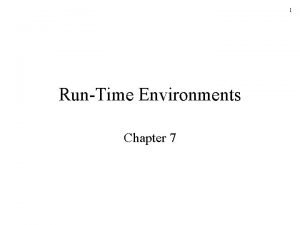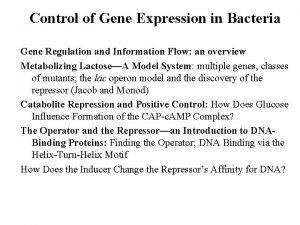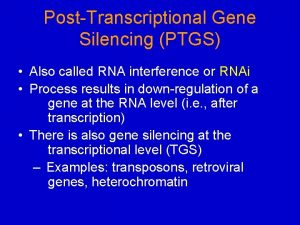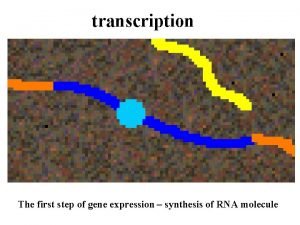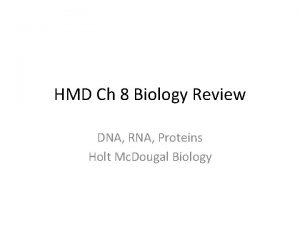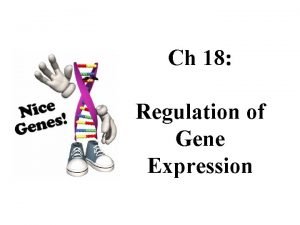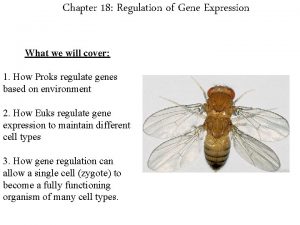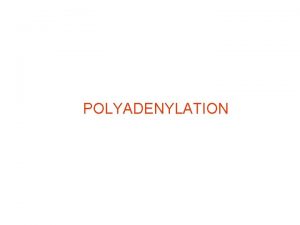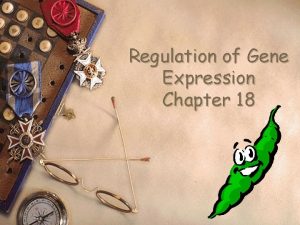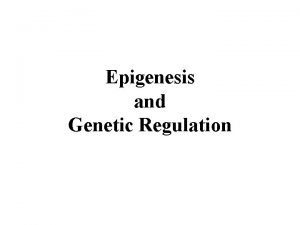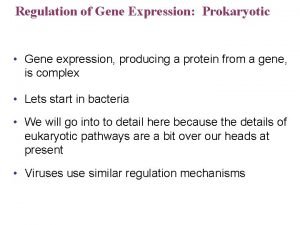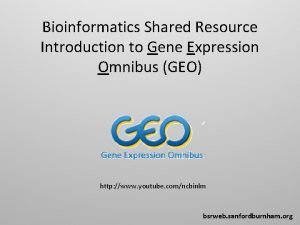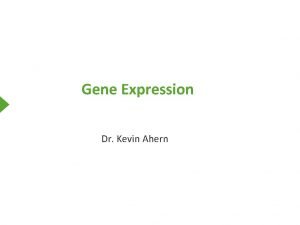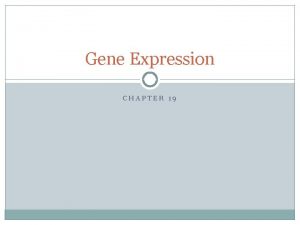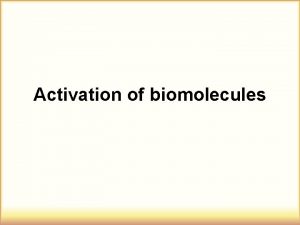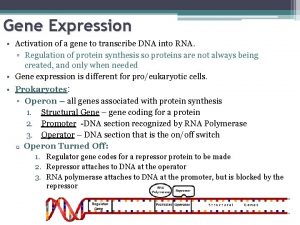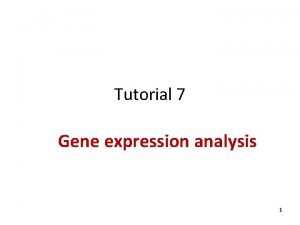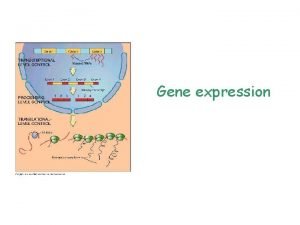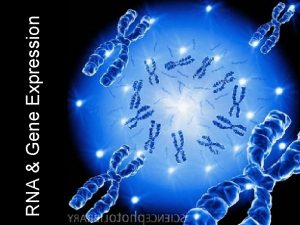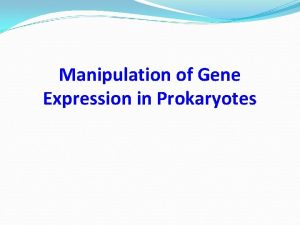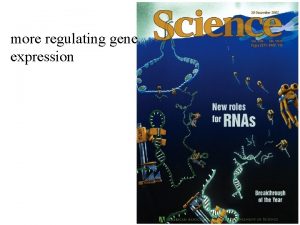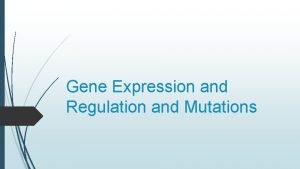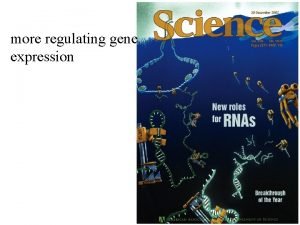Gene Expression 1 Gene expression is the activation














- Slides: 14

Gene Expression 1. Gene expression is the activation of a gene that results in transcription and the production of m. RNA. Only a fraction of any cell’s genes are expressed at any one time.

Gene Expression in Prokaryotes � 2. An operon is a series of genes that code for specific products and the regulatory elements that control these genes. In prokaryotes, the structural genes, the promoter, and the operator collectively form an operon.

Gene Expression in Prokaryotes � 3. Structural Genes at code for specific products, such as polypeptides.

Gene Expression in Prokaryotes � 4. A promoter is the segment of DNA that is recognized by the enzyme RNA polymerase, which then initiates transcription. � 5. An operator is the segment of DNA that acts as a “switch” by controlling the access of RNA polymerase to the promoter.

Gene Expression 6. Repressor proteins are coded for by regulator genes and these proteins inhibit genes from being expressed. They attach and physically block the advancement of RNA polymerase.

Gene Expression 7. An Inducer is a molecule that initiates gene expression by binding to the repressor protein causing it to detach. RNA polymerase can then advance to the structural genes.

Lac Operon Video

Central Framework of Molecular Biology DNA RNA Protein Trait

Transformation Procedure Overview Day 1 Day 2

What is a plasmid? • A circular piece of autonomously replicating DNA • Originally evolved by bacteria • May express antibiotic resistance gene or be modified to express proteins of interest

Bacterial DNA Bacterial cell Plasmid DNA Genomic DNA

Gene Expression • Beta Lactamase – Ampicillin resistance • Green Fluorescent Protein (GFP) – Aequorea victoria jellyfish gene • ara. C regulator protein – Regulates GFP transcription

Recombinant DNA Both the plasmid and target gene were cut using the same restriction enzyme. Since the sticky ends would easily bond together, the target gene was spliced into the plasmid DNA.

What is Transformation? Cell wall GFP • Uptake of foreign DNA, often a circular plasmid Bacterial chromosomal DNA p. GLO plasmids
 Activation tree and activation record
Activation tree and activation record Protein power point
Protein power point Gene by gene test results
Gene by gene test results Positive control and negative control
Positive control and negative control Regulation of gene expression in bacteria
Regulation of gene expression in bacteria Gene expression
Gene expression טרנסלציה
טרנסלציה At dna
At dna Chapter 18 regulation of gene expression
Chapter 18 regulation of gene expression Chapter 18 regulation of gene expression
Chapter 18 regulation of gene expression Gene expression
Gene expression Chapter 18 regulation of gene expression
Chapter 18 regulation of gene expression Lyonization of gene expression
Lyonization of gene expression Trp operon
Trp operon Gene expression omnibus tutorial
Gene expression omnibus tutorial
